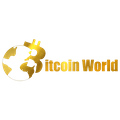South Korea’s Bold Move: Unpacking Inevitable Stablecoin Regulation
0
0
BitcoinWorld

South Korea’s Bold Move: Unpacking Inevitable Stablecoin Regulation
Get ready for a significant shift in the world of digital finance! South Korea, a nation at the forefront of technological adoption, is taking decisive steps towards embracing and regulating stablecoins. This isn’t just another policy discussion; it’s being described as an ‘unavoidable reality’ by the Presidential Policy Planning Committee. For anyone tracking the evolution of cryptocurrencies, especially the growing influence of South Korea stablecoin policies, this development signals a critical juncture in how digital currencies will integrate into mainstream financial systems globally.
Why is South Korea Stablecoin Oversight Becoming Inevitable?
The conversation around stablecoins has matured significantly. No longer a niche topic, these digital assets, pegged to stable values like fiat currencies or commodities, are increasingly seen as a bridge between traditional finance and the volatile crypto market. South Korea’s Presidential Policy Planning Committee, a key advisory body, recognizes this evolving landscape. According to Yonhap News, committee spokesperson Cho Seung-rae emphasized that stablecoins’ integration into the financial system is no longer a matter of ‘if’ but ‘when’ and ‘how’.
So, what’s driving this urgency? Several factors are at play:
- Global Precedent: The ongoing legislative efforts in the U.S. to establish a framework for stablecoins are a major catalyst. As Cho Seung-rae noted, with major economies moving towards clearer rules, ignoring the issue becomes increasingly difficult for other nations.
- Market Growth: The stablecoin market has expanded exponentially, facilitating billions of dollars in daily transactions. This growth necessitates a regulatory framework to manage potential risks and ensure market integrity.
- Consumer Protection: Without clear oversight, stablecoin users are exposed to risks such as issuer insolvency, lack of transparency, and market manipulation. Regulations aim to provide a safer environment for participants.
- Financial Stability Concerns: Large-scale stablecoin adoption without proper safeguards could pose systemic risks to the broader financial system, particularly if a major stablecoin were to de-peg or collapse.
Understanding the Scope of Stablecoin Regulation Proposals
The Presidential Policy Planning Committee is currently reviewing a variety of proposals, indicating a comprehensive approach rather than a one-size-fits-all solution. While the specifics of these proposals are still under wraps, we can infer the likely areas of focus based on global trends and the committee’s mandate. The first division of the economic subcommittee is leading these crucial discussions, suggesting a strong emphasis on economic impact and financial integration.
Key areas that stablecoin regulation proposals typically address include:
| Aspect of Regulation | Description | Why it Matters |
|---|---|---|
| Licensing & Authorization | Requiring stablecoin issuers to obtain specific licenses from financial authorities. | Ensures only legitimate and financially sound entities can issue stablecoins, preventing scams. |
| Reserve Requirements | Mandating that stablecoin issuers hold reserves equal to the value of stablecoins in circulation, with regular audits. | Guarantees the stablecoin’s peg and allows for redemption, building user trust. |
| Consumer Protection | Establishing rules around disclosure, dispute resolution, and safeguarding user funds. | Protects individual investors from fraud, mismanagement, and market volatility. |
| Anti-Money Laundering (AML) & Counter-Terrorist Financing (CTF) | Implementing strict AML/CTF protocols, including KYC (Know Your Customer) requirements. | Prevents illicit activities and ensures compliance with international financial standards. |
| Interoperability & Settlement | Considering how stablecoins will interact with existing payment systems and settlement infrastructures. | Facilitates seamless integration into the broader financial ecosystem. |
These discussions highlight South Korea’s commitment to creating a robust framework that supports innovation while mitigating risks.
The Global Push for Robust Crypto Oversight
South Korea’s move isn’t happening in a vacuum; it’s part of a broader global trend towards increased crypto oversight. From the European Union’s MiCA (Markets in Crypto-Assets) regulation to ongoing debates in the U.S. Congress, regulators worldwide are grappling with how to effectively govern a rapidly evolving digital asset landscape. The U.S. House Financial Services Committee, for instance, has been actively working on stablecoin legislation, aiming to create a comprehensive federal framework.
This international momentum underscores a shared understanding among policymakers:
- Cross-border Nature: Cryptocurrencies and stablecoins operate globally, making fragmented national regulations less effective. Coordinated international efforts are becoming crucial.
- Innovation vs. Risk: Regulators are walking a tightrope, seeking to foster innovation in fintech while preventing systemic risks, consumer harm, and illicit financial activities.
- Learning from Past Incidents: High-profile collapses and de-pegging events in the crypto market have accelerated the urgency for clear regulatory guidelines.
South Korea’s active engagement in these discussions positions it as a proactive player, aiming to shape rather much merely react to the global regulatory environment.
Integrating Digital Assets into Korea’s Traditional Finance
The ultimate goal of this regulatory push is to seamlessly integrate digital assets, particularly stablecoins, into South Korea’s existing financial infrastructure. This integration isn’t just about compliance; it’s about unlocking new efficiencies and possibilities for both individuals and businesses. Imagine faster, cheaper cross-border payments, or innovative financial products built on a regulated digital currency foundation.
However, this integration also presents challenges:
- Technological Compatibility: Ensuring that blockchain-based systems can securely and efficiently interact with traditional banking infrastructure.
- Legal Clarity: Defining the legal status of stablecoins – are they securities, commodities, or a new class of digital money? This impacts their regulatory treatment.
- Market Education: Educating the public and financial institutions about the safe and effective use of stablecoins.
- Risk Management: Developing robust frameworks to manage operational, liquidity, and cyber risks associated with digital assets.
The committee’s focus on preparation and response indicates a forward-thinking approach, aiming to proactively address these challenges rather than reacting after issues arise.
How This Move Bolsters Financial Stability
At the heart of South Korea’s regulatory drive is the paramount goal of bolstering financial stability. Stablecoins, despite their name, can introduce instability if not properly managed. A large, unregulated stablecoin market could transmit shocks to the traditional financial system, especially if a major stablecoin issuer faces solvency issues or its reserves are found to be inadequate.
By bringing stablecoins under a robust regulatory umbrella, South Korea aims to:
- Prevent Systemic Risk: Ensure that the failure of a stablecoin does not cascade into broader financial markets.
- Enhance Transparency: Mandate regular audits and public disclosure of reserve assets, building trust and reducing speculation.
- Support Legitimate Innovation: Create a safe environment for businesses to leverage stablecoins for legitimate purposes, fostering economic growth.
- Combat Illicit Finance: Implement strict AML/CTF measures to prevent stablecoins from being used for money laundering or terrorist financing.
This proactive stance is crucial for maintaining confidence in both the digital asset market and the overall financial system, ensuring that South Korea remains a secure and attractive hub for technological and financial innovation.
Conclusion: A New Era for Digital Finance in South Korea
South Korea’s Presidential Policy Planning Committee’s clear statement on the inevitability of stablecoin oversight marks a pivotal moment. It signifies a mature approach to digital assets, moving beyond initial skepticism to pragmatic integration. By actively reviewing proposals and considering global legislative movements, South Korea is setting the stage for a regulated, secure, and integrated future for stablecoins within its financial ecosystem. This proactive and thoughtful approach promises to foster innovation while safeguarding consumers and maintaining the nation’s financial integrity, truly ushering in a new era for digital finance.
To learn more about the latest crypto market trends, explore our article on key developments shaping digital asset institutional adoption.
This post South Korea’s Bold Move: Unpacking Inevitable Stablecoin Regulation first appeared on BitcoinWorld and is written by Editorial Team
0
0
 Manage all your crypto, NFT and DeFi from one place
Manage all your crypto, NFT and DeFi from one placeSecurely connect the portfolio you’re using to start.




